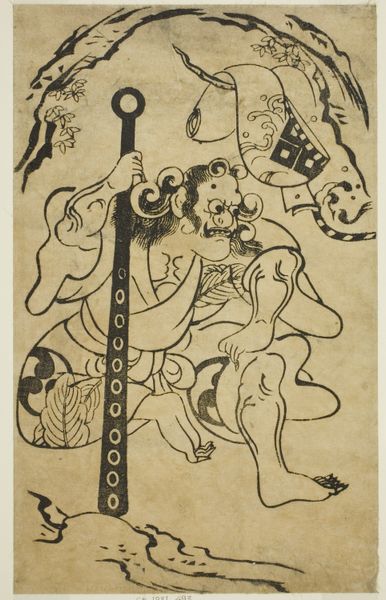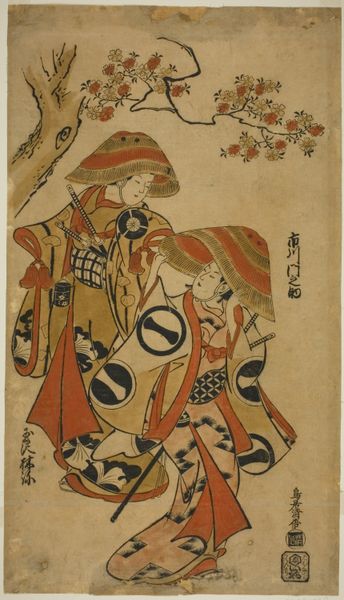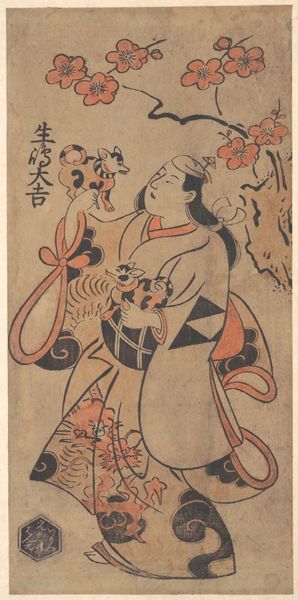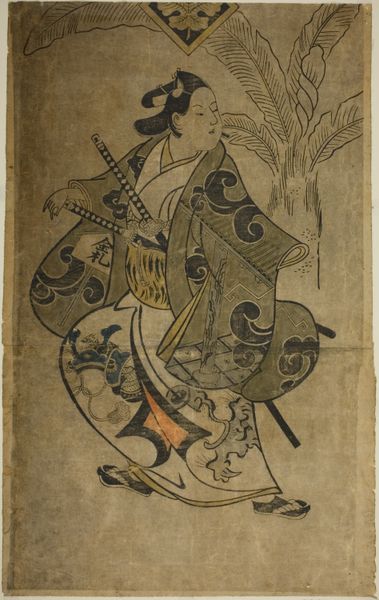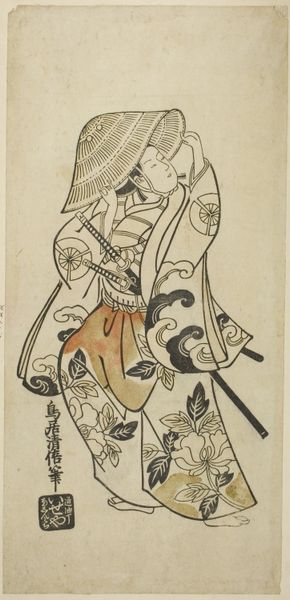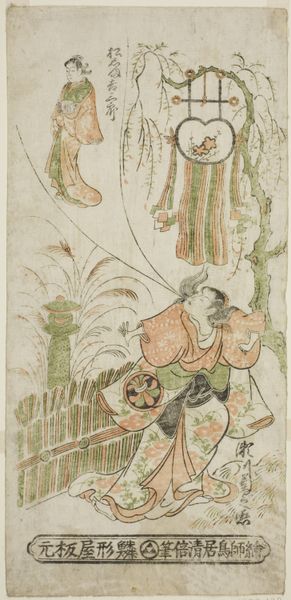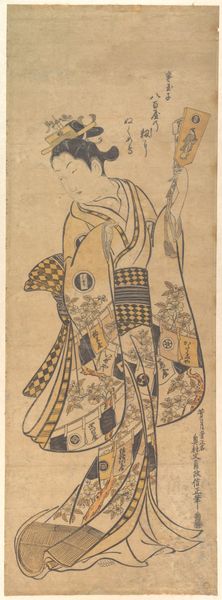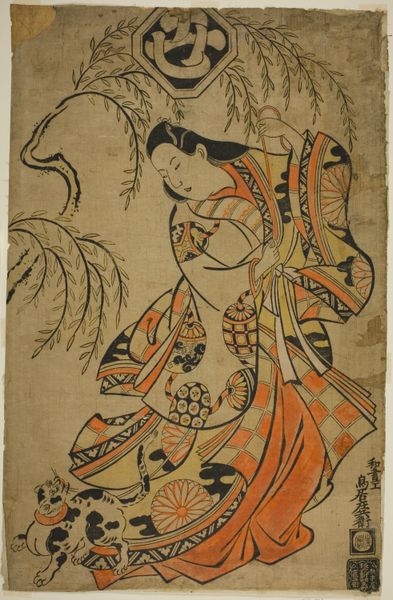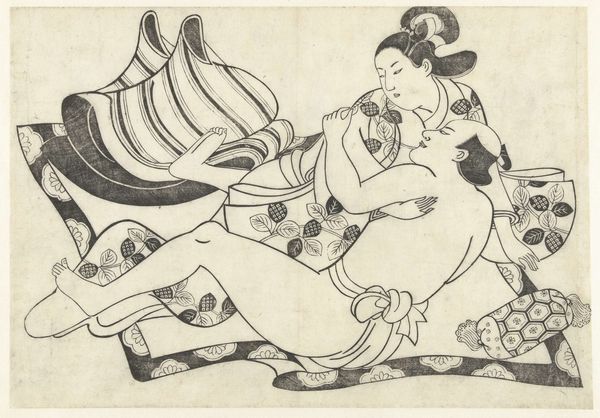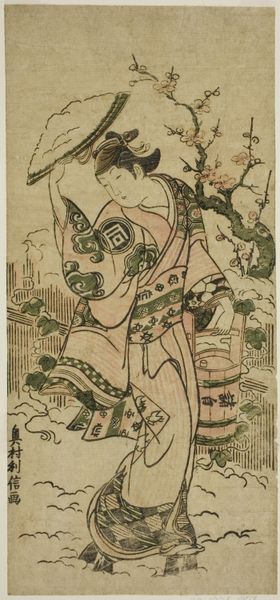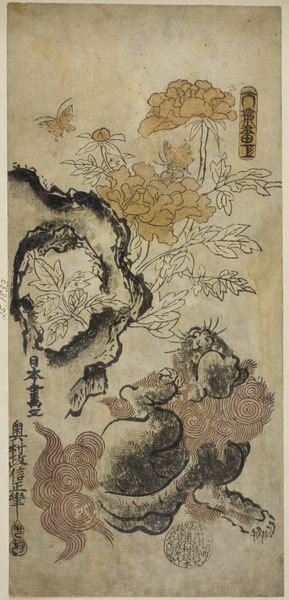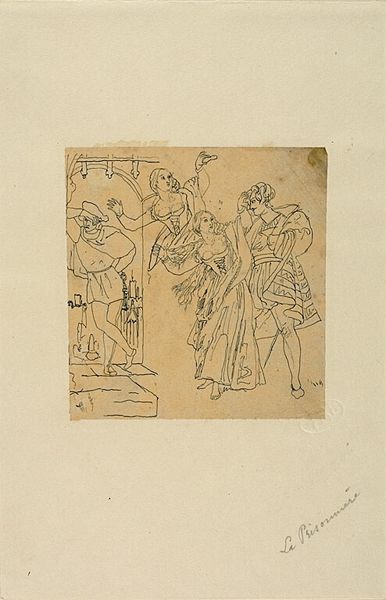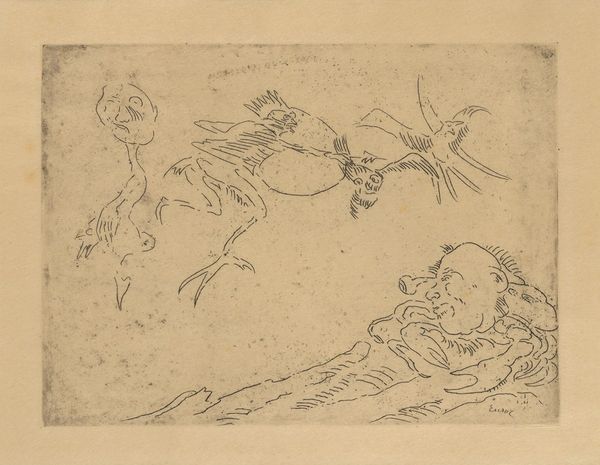
"At the Edge of the River Akutagawa" from the Tales of Ise (Ise monogatari) 1681 - 1703
0:00
0:00
print, ink, woodblock-print
#
ink drawing
#
narrative-art
# print
#
asian-art
#
landscape
#
ukiyo-e
#
figuration
#
ink
#
woodblock-print
#
line
Dimensions: Image: 8 3/4 x 5 1/2 in. (22.2 x 14 cm)
Copyright: Public Domain
Curator: This woodblock print, attributed to Sugimura Jihei, dates from 1681 to 1703. Titled "At the Edge of the River Akutagawa" from the Tales of Ise, it presents a compelling narrative scene. Editor: It strikes me as desolate. The stark ink drawing, the figures isolated... there's a sense of quiet desperation in this composition, a story etched in minimal lines. Curator: The composition is certainly striking. We see two distinct registers; above, two figures reclined under stylized clouds, and below, two figures hastily moving along a riverbank. Note the almost diagrammatic use of line to convey form and texture. It is a sophisticated visual shorthand. Editor: Those hurried figures along the Akutagawa River definitely capture the violence women experienced when patriarchal property relations forced them into desperate acts. It makes you wonder about their story, their options, the larger socio-economic systems trapping them. Curator: Intriguing point, but focusing purely on the graphic elements, consider how Jihei uses empty space. It's not merely absence; it defines the figures, allows them to breathe. The stark contrast of ink on the ground lends drama. Editor: I read that use of emptiness as visual representation of the nothingness they face. These narratives—and the ways they’re depicted here—give us a crucial understanding of Edo period gender dynamics and its intersection with class and power. These tales were the tabloids of their time! Curator: True, it speaks volumes on how popular imagination engaged with tales of ordinary peoples hardships during a transition era of new money, a growing urban center and waning samurai power. Editor: Absolutely, and bringing that connection between form and socio-historical forces really gives this piece its continued power today. Curator: I concede that recognizing those contexts enriches a purely formal understanding. Looking closer now at the print, its impact is greater when seen with both a visual and historical insight. Editor: Yes, exactly! Now I feel more informed and ready to face whatever's next in our audio tour. Thanks for a stimulating analysis.
Comments
No comments
Be the first to comment and join the conversation on the ultimate creative platform.
